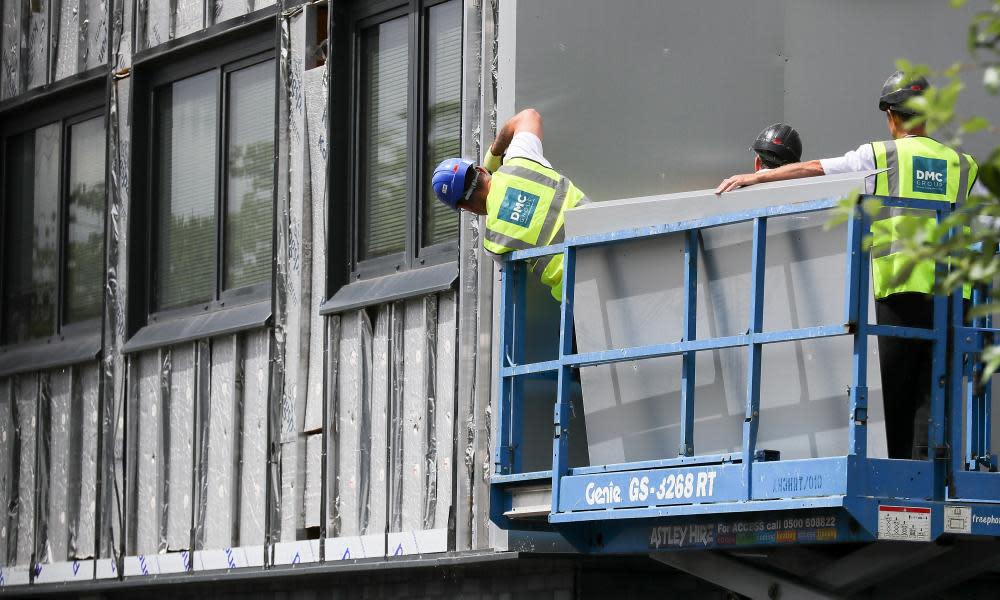Tower block residents face uncertainty as new tests of materials launched

New safety fears over high-rise blocks clad in materials different to those used on Grenfell Tower have forced the government to widen its fire testing regime, meaning potential uncertainty for thousands more residents.
The housing minister, Kit Malthouse, has ordered combustibility tests on panels used on high-rise apartments, hotels and student accommodation that differ from the aluminium composite (ACM) panels used at Grenfell and 437 other buildings identified so far.
Industry research suggests at least 160 apartment, hotel and student blocks are among high-rise properties built with materials in their rainscreen cladding systems that have not been accounted for in the government’s targeting of buildings with ACM panels.
They include so-called high-pressure laminate panels, made from compressed wood or paper fibre, which are used to produce often colourful skins for new buildings and some of which are classed as combustible.
The ministerial decision to order fire tests on such materials 19 months after the Grenfell fire claimed 72 lives follows pressure from the Labour party, and has the potential to dramatically increase the number of buildings that may require action to make them safe.
In the months after the disaster in west London in June 2017, the government advised owners of buildings with non-ACM cladding to check them. On Tuesday Malthouse told parliament that fire experts had updated that guidance.
“We have commissioned the Building Research Establishment to conduct a programme of testing on non-ACM materials and we expect that testing to start shortly,” he said.
The government has already banned the use of combustible materials in the cladding of new high-rise accommodation blocks and has ordered the removal of combustible ACM panels from existing towers, although many building owners are in dispute with leaseholders over who should pay.
Ministers have refused to say where the buildings are or who owns them, citing safety concerns. Malthouse said the Ministry of Housing, Communities and Local Government had been “cajoling” private owners to remove the cladding and was now considering “more assertive” measures.
Residents in one block in Bromley, Kent, told the Guardian that they were facing possible bankruptcy and were falling ill with stress after the building owner and its developer refused to pay £4m to make their homes safe. The latest government figures show that cladding on only five of 176 privately owned towers identified has been replaced as such disputes continue.
In response to an urgent question in parliament from John Healey, the shadow housing and communities secretary, Malthouse said: “There remain 42 private residential buildings for which the owner’s plans are unclear, so we are maintaining pressure and rule out no solutions.”
Healey said: “It should be a cause for national shame that over 19 months after the Grenfell Tower fire I am having to drag ministers to the house because there are still buildings in this country cloaked in Grenfell-style cladding and residents who do not know whether their homes are safe.”
The cost of remediating buildings with ACM cladding across England has already been estimated at £1bn and the government has promised £400m from existing housing funding to help pay for the retrofit of affordable housing towers.

 Yahoo News
Yahoo News 
